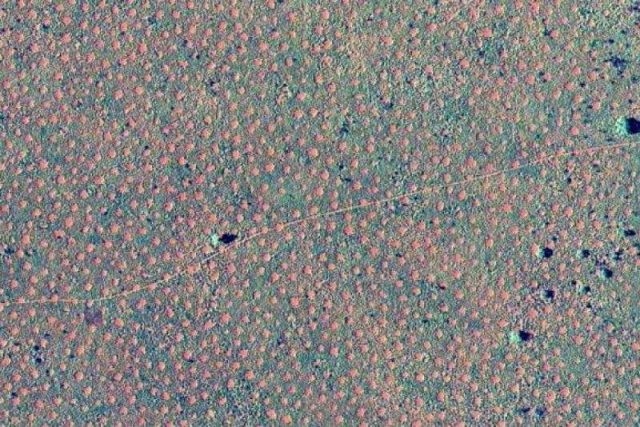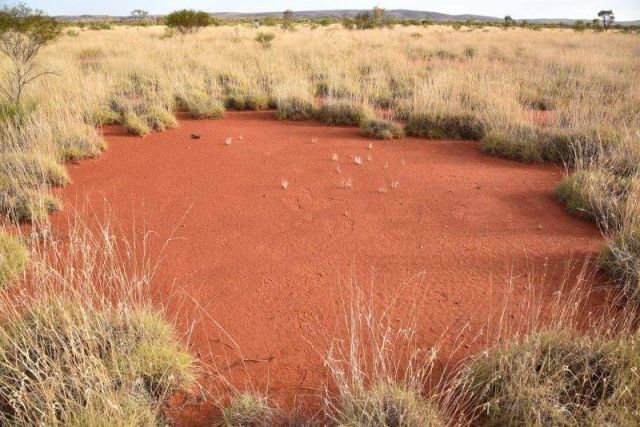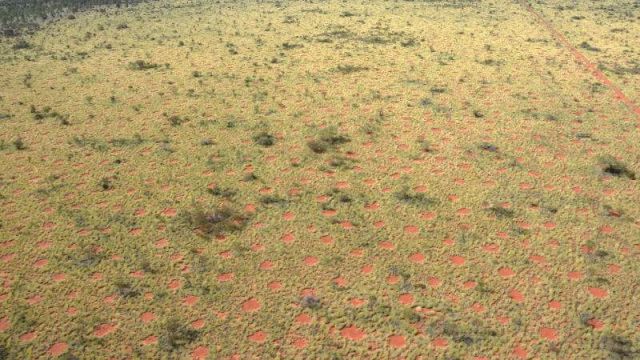Discovery of fairy circles in Australia, are one of nature’s greatest mysteries and subject to a lively debate on their origin.
Fairy circles in Australia which are regularly spaced patches of bare soil, have a hardened top-soil layer that prevents the growth of grass.
Above: Aerial view of the Australian fairy circles. Image credit Bronwyn Bell
Vegetation gap patterns in arid grasslands, such as the “fairy circles” of Namibia, that until recently only been confirmed in Namibia in south-western Africa, supports self-organization theory:
They are characterized by small-scale hexagonal ordering of circular bare-soil gaps typically measure 12 to 22 feet (7 to 9 meters), that “persists uniformly in the landscape scale to form a homogeneous distribution.”
Pattern-formation theory predicts that such highly ordered gap patterns should be found also in other water-limited systems across the globe, even if the mechanisms of their formation are different. Here we report that so far unknown fairy circles with the same spatial structure exist 10,000 km away from Namibia in the remote outback of Australia.
This fairy circle features a hardened top-soil layer that’s preventing the growth of grass. Image credit Stephan Getzin
Dr Todd Erickson, from the Restoration Seed Bank Initiative at the University of Western Australia, said:
“You don’t see them from the ground. You can be standing inside a fairy circle and not see the next one 10 meters away; to find them, you need to spot them from the air.
People have known about
Fairy circles in Australia near Newman. Image credit Kevin Sanders
According to ABC Science:
One hypothesis suggests that insects or ants nibbled away at the plants’ roots.
Another one explains that the circles are caused by underground bubbles of carbon monoxide.
But now researchers believe that the fairy circles were formed by “plants organizing themselves in response to scarce water resources.”
via popsci








Where are the tests for these hypotheses???
Update: Read more at ABC Science